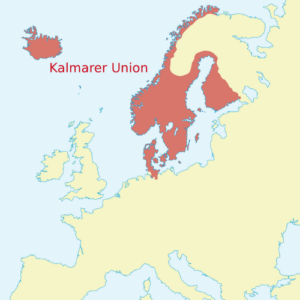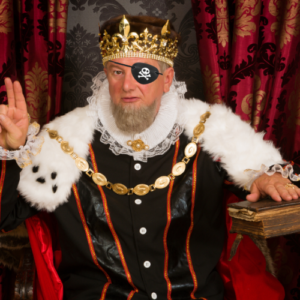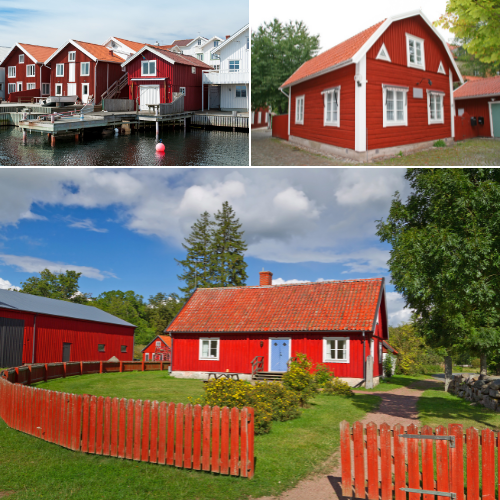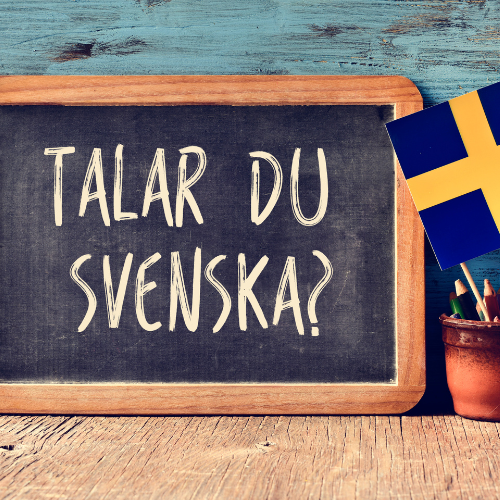
The king who became a pirate
Today, I want to tell you the story of the king who became a pirate. This is a true story, but some of the facts can be questioned as it all took place in the late 14th century and the documentation was not that precise, but I will try to tell this story to the best of my abilities.
The king I am talking about was Erik the king of the Kalmar Union, which consisted of Denmark, Norway, and Sweden in the late 14th century. But we need to start this story much earlier. We actually need to start with his grandaunt Margaret I who was the ruler of Denmark and Norway.
Unfortunately, her only son was deceased and she had no heir to the throne. At this point, she was worried that her nephew, the Swedish king Albrecht of Mecklenburg, even though he was very unpopular, would grab power in both Norway and Denmark. Margaret was very smart and to secure the power, she needed an heir of her bloodline.
Five years earlier, her sister had a grandson by her daughter, Maria Mecklenburg-Schwerin, and her husband, duke Heinrich Wartislaw VII of Pomeranian. The boy was named Bugislaw of Pomeranian and was her bloodline. So, Margaret approached her grandniece and offered to adopt him to become the heir of her two kingdoms.

The Kalmar Union
This was arranged and the boy was renamed Erik after the Swedish national saint. The Royal council and the noblemen of Denmark and Norway agreed to crown the then seven-year-old Erik King in 1389 with Margaret continuing as regent. As I already mentioned, Margaret was a very smart woman and she managed to unite all three Scandinavian countries in a union called the Kalmar Union.
At this point, Included was Norway, which included Iceland, Greenland, the Faroe island, and the northern Isles of Orkney and Shetland, Sweden, including most of today’s Finland and Denmark.
So on June 17th, 1397, it was confirmed that Eric was to become one United king reigning over all three realms.
The Kalmar Union marked a break with the old Nordic Viking culture. And Erik VIII was king of one of the biggest realms in the world.
Erik was known as Erik III in Norway, Erik VII in Denmark, and Erik the XIII in Sweden. He was later to be known as Erik of Pomeranian in all three countries to point out that he belonged elsewhere, but let’s not get ahead of ourselves.
Although Erik was the crowned king, his grand-aunt Margaret effectively was the ruler. And when she died in 1412, he finally got to rule. He would soon find out that keeping the three countries together was not an easy task. Before Margaret died. She and Erik had started a fight with the Dukes on the kingdom’s southern border, trying to annex the two territories, Slesvig and Holstein to their kingdom. In the year 1416, this escalated to a full-blown war, which was very expensive so king Erik raised all taxes.
Losing power
After two decades of war, he finally defeated what was called the Hanseatic League, a Confederation of German merchant Guilds. He then imposed a policy that every ship that entered or left the Baltic sea had to pay a toll to pass through the strait between Denmark and Sweden.
The high taxes, the toll to enter or leave the Baltics led to increasing doubt about his rule among the Union’s noblemen, adding to this was the fact that he had no heir of his own and instead pushed for his cousin Bugislav IX of Pomeranian to become his heir and putting Pomeranians in high positions in the kingdom, by the 1430s, he was on bad terms with everybody within and around the union.
The Swedes were the first to try to break free as they asked for a new constitutional law to grant Sweden autonomy and self-governance. Eric refused, which led to a rebellion in 1439. Eric was dethroned in Sweden and then both Norway and Denmark shortly after
Eric fled Denmark, taking the Royal treasure chest, a few of the crown jewels, the Royal regalia, and the country’s historical flag, and joined the pirates.

Joining the pirates
But who were these pirates you may ask? Well, let’s go back a little bit in time. When Margaret I first tried to take the power of Sweden she had imprisoned Albert of Mecklenburg, the Swedish king, and the city of Stockholm was under siege. A fellowship was formed and hired by the Dukes of Mecklenburg to fight Margret and bring the city food and supplies. That fellowship called themselves The Victual Brothers. When the war was over and the Kalmar Union was a fact, the Victual Brothers occupied the island of Gotland from where they continued to loot and pillage ships in the Baltic sea. They became pirates.
When Erik fled Copenhagen, he set sails for Gotland to join the Victual Brothers to fight those who had turned on him. Erik still saw himself as the rightful king but had already, been replaced by his nephew Christoffer of Bayern who saw Erik as a pirate.
It is believed that Erik never was onboard the looting ships himself. Instead, he orchestrated and controlled everything from Gotland.
Erik saw himself as a sea warrior, not as a pirate. And he spent a full decade as a pirate king, always hoping to return to power. But when his nephew, Christopher of Bayern died, childless, his countrymen brought in a new king from a different blood lineage and Erik finally gave up the hope to reclaim the throne.
He returned to his birthplace, Pomeranian, where he died at the age of 77 and that was the end of the pirate king.
I hope you enjoyed this episode and if so, I would love it if you could leave a review of my podcast and share it with a friend.
And don’t forget that we now have the community server on Discord, where you can influence what we will talk about in the future.
Until next time
as we say in Sweden
Hej Då




